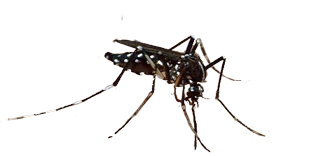
This image has format transparent PNG with resolution 320x156.
You can download this image in best resolution from this page and use it for design and web design.
Mosquito PNG with transparent background you can download for free, just click on download button.
Mosquitoes are small, midge-like flies that constitute the family Culicidae. Females of most species are ectoparasites, whose tube-like mouthparts (called a proboscis) pierce the hosts' skin to consume blood. The word "mosquito" (formed by mosca and diminutive -ito) is Spanish for "little fly". Thousands of species feed on the blood of various kinds of hosts, mainly vertebrates, including mammals, birds, reptiles, amphibians, and even some kinds of fish. Some mosquitoes also attack invertebrates, mainly other arthropods. Though the loss of blood is seldom of any importance to the victim, the saliva of the mosquito often causes an irritating rash that is a serious nuisance. Much more serious though, are the roles of many species of mosquitoes as vectors of diseases. In passing from host to host, some transmit extremely harmful infections such as malaria, yellow fever, Chikungunya, West Nile virus, dengue fever, filariasis, Zika virus and other arboviruses, rendering it the deadliest animal family in the world.
Mosquitoes are members of a family of nematocerid flies: the Culicidae (from the Latin culex, genitive culicis, meaning "midge" or "gnat"). Superficially, mosquitoes resemble crane flies (family Tipulidae) and chironomid flies (family Chironomidae). In particular, the females of many species of mosquitoes are blood-eating pests and dangerous vectors of diseases, whereas members of the similar-looking Chironomidae and Tipulidae are not. Many species of mosquitoes are not blood eaters and of those that are, many create a "high to low pressure" in the blood to obtain it and do not transmit disease. Also, in the bloodsucking species, only the females suck blood. Furthermore, even among mosquitoes that do carry important diseases, neither all species of mosquitoes, nor all strains of a given species transmit the same kinds of diseases, nor do they all transmit the diseases under the same circumstances; their habits differ. For example, some species attack people in houses, and others prefer to attack people walking in forests. Accordingly, in managing public health, knowing which species or even which strain of mosquito one is dealing with is important.
Over 3,500 species of mosquitoes have already been described from various parts of the world. Some mosquitoes that bite humans routinely act as vectors for a number of infectious diseases affecting millions of people per year. Others that do not routinely bite humans, but are the vectors for animal diseases, may become disastrous agents for zoonosis of new diseases when their habitats are disturbed, for instance by sudden deforestation.
In this clipart you can download free insects PNG images: Mosquito PNG images free download